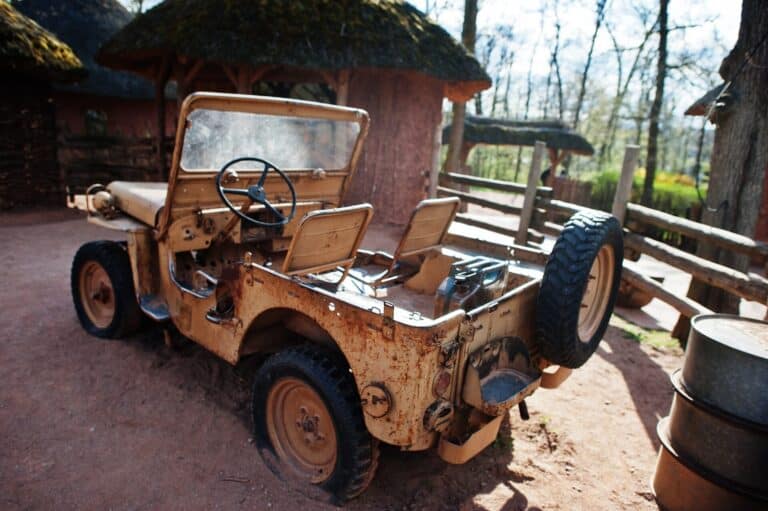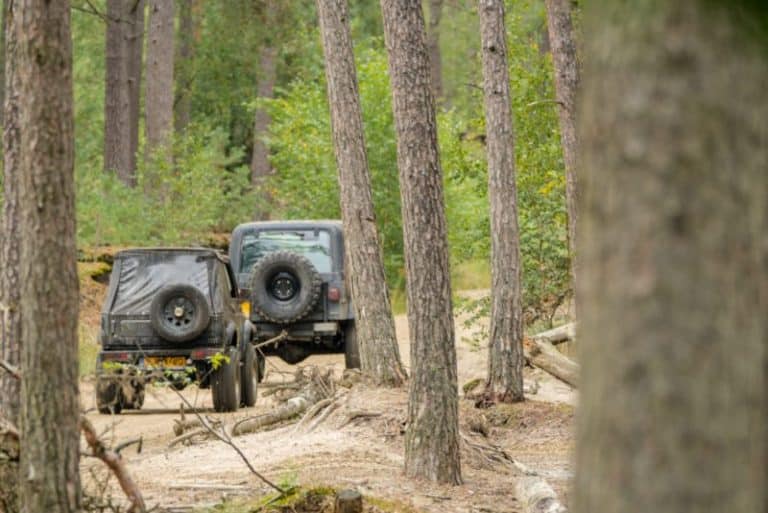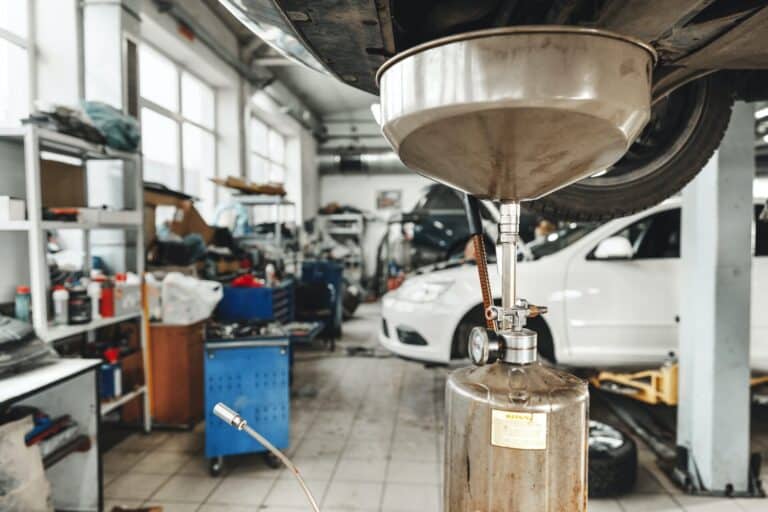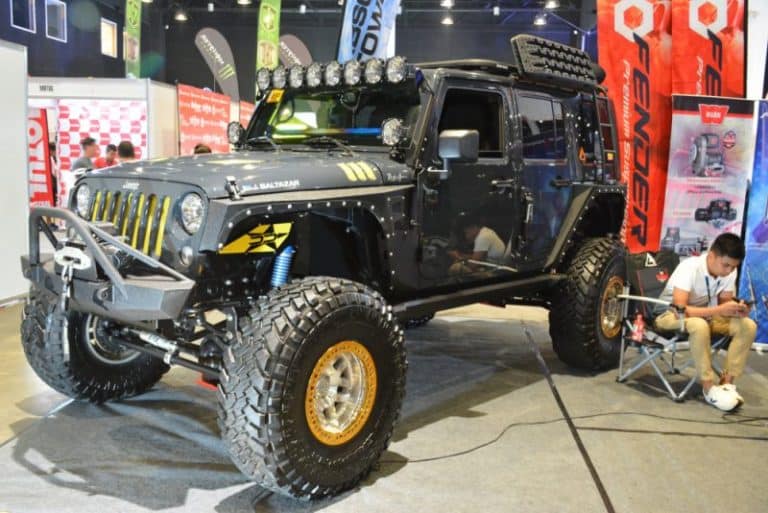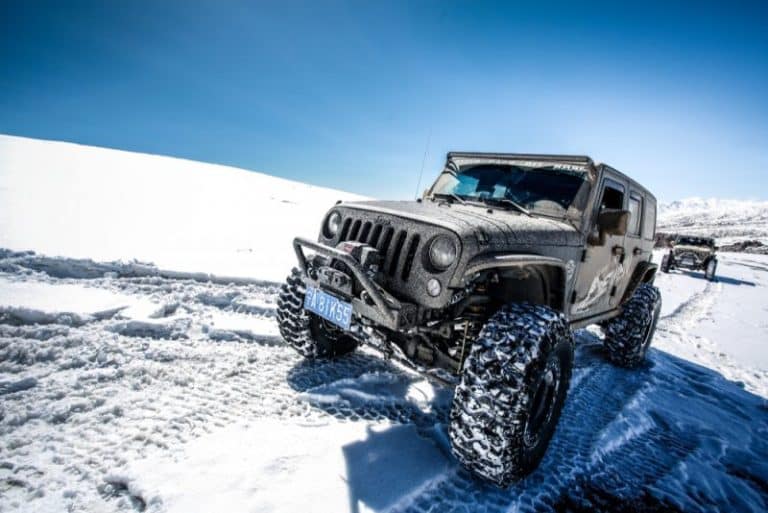Do Jeep Wranglers Have Limited Slip Differential?
No differential is perfect, but the limited-slip differential is better than the others. Even though it has its disadvantages, its benefits weigh more.
If you’re looking to buy a car and have eyes on the Jeep Wrangler, it’s no wonder you are interested to know if the Wrangler comes with the limited-slip differential.
Well, this article has just the answers you need.
Some Jeep Wranglers like the Sport S, Rubicon, and Moab, have a limited-slip differential, while the other models have an open differential system. However, the limited-slip differential is better than the open differential because it provides more control over traction while driving on slippery or rough terrains.
Does the Jeep Wrangler Have Limited Slip?
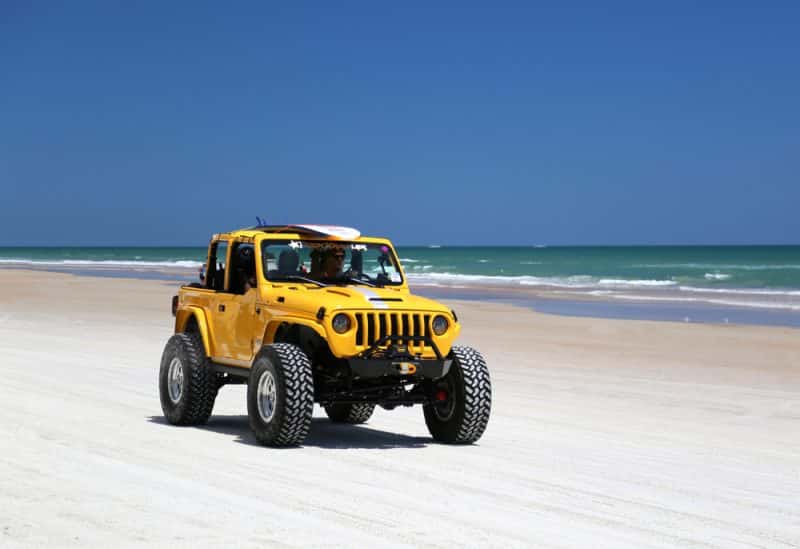
Jeep Wranglers (Moab and Rubicon) have a limited-slip differential (LSD). Also, the Jeep Wrangler Sport S and the Sahara have a factory optional rear limited-slip differential.
However, some Jeep Wrangler models have an open differential.
This differential is best for every day and on-road driving conditions. But, if one of the wheels loses traction while in the mud or sand, it’ll spin helplessly.
That is why every Wrangler should have a limited slip or locking differential.
Cars with limited-slip differentials perform the functions of both a locked and an open differential. Most driving conditions are structured to work as an open differential.
When the wheels have the same amount of traction and the car isn’t turning, the limited-slip differential will spin the wheels at the same speed using torque.
So, if you didn’t order an LSD from the factory while getting your Wrangler, you can check out the available aftermarket upgrades.
What is Limited Slip Differential?
Limited Slip Differential (LSD), otherwise known as the generic trademark positraction, is a device that lets its two output shafts keep rotating at varying speeds but ensues limitation to the maximum difference between the two shafts.
In some vehicles, limited-slip differentials take the place of standard differentials. Their function is to send some dynamic advantages at the expense of huge complexity.
The major merit of a limited-slip differential is obvious when using an open or standard differential in snow off-road conditions where one wheel starts to slip.
In such situations, the wheel that’s slipping (non-contacting) will receive more power in low torque and high RPM rotation. On the other hand, the contacting wheel will remain fixed to the ground.
Additionally, limited-slip differentials help stop excessive power from being allocated to one wheel.
Hence it helps all the wheels remain in powered rotation. This limitation ensures that the traction isn’t restricted to the wheel so that it can handle the least amount of power.
The benefits of a limited-slip differential in rear-wheel and high-power vehicles were reflected in the “muscle-car” era in the USA. Besides, there are two types of limited-slip differentials.
The first is the clutch type which uses wet friction to regulate how much power goes to the wheels. A typical example is the Yukon Gear.
The second type is gear-driven which uses helical-shaped gears that combine increasing forces as one of the wheels slips and then moves torque to the wheel with high traction.
An example is a GRIP PRO Powertrax GT444430 traction system.
How Does a Limited Slip Differential Work?
The basic principle of a limited-slip differential is that it provides control over power delivery more than the conventional open differential.
Open differentials use gears to ensure that each wheel turns at varying speeds when moving around corners.
However, it’s easy for the open differential to maneuver the delivery process when the power is too high.
So, in LSD, when power reaches the wheels, it searches for the path with the least resistance, the one with the smallest amount of grip.
As a result, if your vehicle’s throttle is heavy, all the power will evaporate in smoke-like form while the unloaded tire is spinning away and the other is still gripping.
To distribute the engine’s torque evenly to the wheel with the highest grip, you’ll need different mechanisms like a viscous fluid system or clutch assembly.
With this, the wheelspin of the unloaded tire will reduce, and the vehicle’s power will improve, boosting grip and accelerating performance.
In addition, limited-slip differentials transfer to the wheels with traction using different methods. They are:
#1. Detroit Truetrac (Helical Gear Style)
This method operates as a standard (open) differential under normal driving conditions, allowing discreet operation.
When a wheel loses traction if the terrain changes, the Detroit Truetrac will mesh with increasing force to transfer the engine’s torque to the wheel with high traction until the spinning slows down or stops completely.
When the car is no longer in low traction, the differential will resume its normal function.
#2. Eaton Posi (Clutch Pack Style)
The Easton Posi prevents wheel slip before it even starts. When one wheel slips, the clamping load on the clutch increases, causing it to transfer power smoothly to another wheel.
How to Tell if Jeep Wrangler Has Limited Slip Differential?
The simplest way to tell if your Jeep Wrangler has a limited-slip differential is to jack up your car and spin one of the rear tires.
If the wheels spin in the same direction, your car has an LSD. But, if they spin in opposite directions, it has an open differential.
Jeep Wranglers’ limited-slip differentials combine the features of a locked and an open differential. You’ll find more Jeep Wranglers with an open differential than a limited-slip differential.
Even though the LSD is a factory option, it is also available for purchase as an aftermarket upgrade.
It also functions as an open differential in most driving conditions.
However, when both wheels have the same amount of traction, and the car doesn’t, the differential spins the wheels at equal speed with the same torque.
That is how cars with a limited-slip differential can burn out.
Open differentials are less efficient than limited-slip differentials because they don’t provide additional traction to the wheels as the LSD would do.
However, locked differentials provide the best traction on uneven surfaces like rocks, snow, and mud.
This advantage is because they provide the benefits of both a spool/locked and an open differential.
For instance, the limited-slip differential in the Jeep Wrangler Rubicon can transfer torque from the low traction tire to the high traction tire by automatically applying the brake to the low traction side inside the differential, either through helical or clutch gears.
Pros of Limited Slip Differentials
Note that none of the differentials are perfect. However, the limited-slip differentials have numerous benefits that the standard open differentials won’t offer.
They include:
#1. Full Control Over Traction
Since there’s usually a loss of traction on one wheel, the limited-slip differential offers more control over traction even while you’re driving on rough or slippery roads.
#2. Ideal for Off-Roading Cars
Unlike the standard open differential system, the limited-slip differential provides the best grip and traction even when driving off-road in rocky and dusty areas.
#3. Improved Safety
The limited-slip differential units help to prevent spin-outs and spillage, even while driving on standard roads. In addition, this traction improves safety by ensuring a smoother ride.
#4. Better Driving Experience
The LSD increases the power and speed of a vehicle by utilizing the engine power more efficiently, ensuring a more enjoyable and smoother drive.
#5. Less Tear Wear on Tyres and Other Components
The LSD helps ensure that none of the wheels is spinning needlessly, preventing unnecessary wear and tear on the tires.
The limited-slip differential also does the same for axle shafts by shifting the torque, allowing less pressure, and increasing their lifespan.
Cons of Limited Slip Differentials

#1. High Cost
The LSD is more expensive than the traditional open differentials. Also, they require more care and maintenance to keep them in the best working condition.
Besides, since they have extra parts and mechanisms, they’ll most likely always need replacements.
#2. Lack of Full Power to Wheels
One major con of the limited-slip differential unit is that it can’t transmit 100% power to one wheel that has traction.
As a result, it will only be able to provide a small amount of power to the wheel with no traction, notwithstanding that it has already taken so much power from it.
#3. LSD Has Different Variations
A limited-slip differential won’t be the same in every car that has it.
Additionally, the speed-sensitive, fixed value LSD, electronically controlled, and torque-sensitive variations of LSD exist. Some of them control elements differently.
So, it won’t be safe to get used to one variation of a limited-slip differential and assume that it’ll be the same in any other vehicle that uses LSD.
#4. Traction is Hard to Manage
There’s a very low possibility of you being able to predict what the traction will do when you’re on rocky, muddy, or sandy terrains.
So even though the limited-slip differential will provide power to the wheels losing traction, it won’t be supplying power to them continuously.
Once the rest of the wheels lose traction, the differential unit will send more power to them. This power transmission may cause the car to pull to just one side.
Conclusion
Not all Jeep Wrangler models have a limited-slip differential; some have the open differential while others have the locker/spool differential.
We’ve extensively explained how to tell if your Jeep Wrangler has an LSD; follow the steps and be sure of your assumptions.
Plus, the advantages and disadvantages of a limited-slip differential will give you more insight into what to expect from cars with this device.


